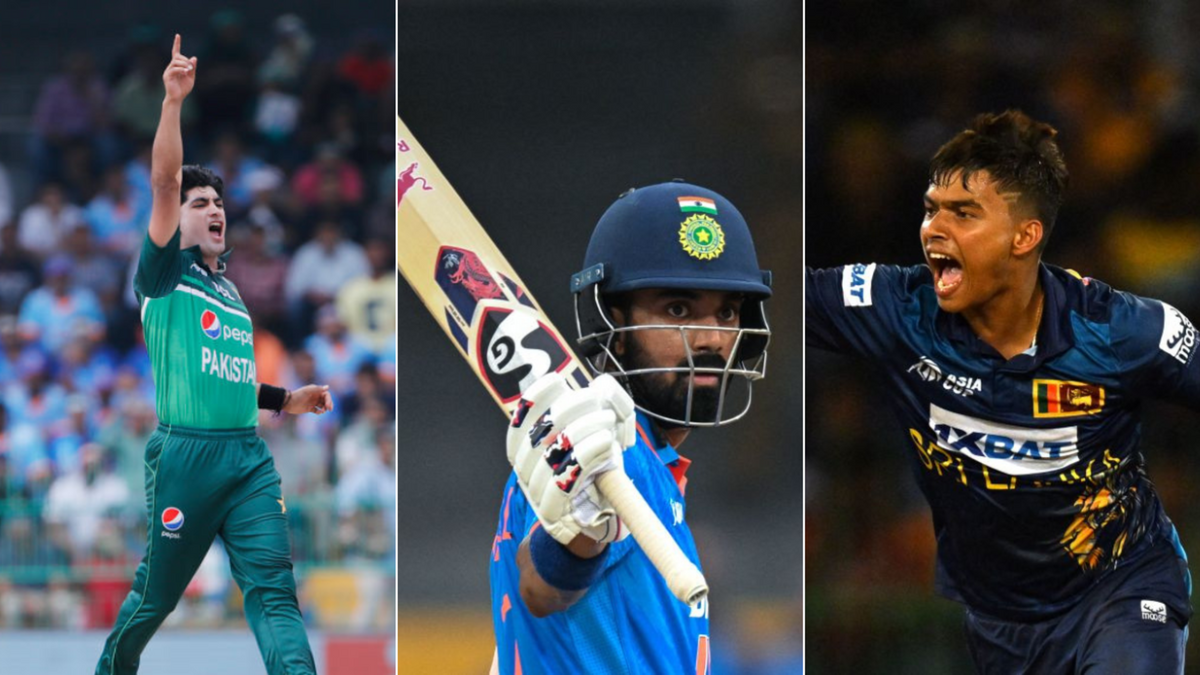
India won the 16th edition of the Asia Cup – their eighth title in the tournament’s history. Here are the key takeaways from the 2023 edition.
Subscribe to the Wisden Cricket YouTube channel for post-match analysis, player interviews, and much more.
Pakistan, official hosts of the 2023 Asia Cup, started with a bang against tournament debutants Nepal but fizzled out in the Super Fours. Sri Lanka reached their second successive final but had a horrendous game and finished second-best. Bangladesh played well in parts and were the only team to beat India, who displayed their strength in all departments, winning their second successive ODI Asia Cup.
Nepal and Afghanistan were eliminated in the group stage. While Nepal were thrashed were Pakistan, they had a decent outing against India, scoring more than 240 runs. Afghanistan, meanwhile, crashed out after losing a thriller against Sri Lanka.
India are ticking all boxes ahead of the World Cup
India were bolstered by the return of three of their first-choice players Shreyas Iyer, KL Rahul, and Jasprit Bumrah. While Iyer suffered a recurrence of his injury, Rahul and Bumrah were back to their best.
[breakout id=”0″][/breakout]
Shubman Gill, Rohit Sharma, and Virat Kohli continued their dominance at the top of the order, as did Kuldeep Yadav and Mohammed Siraj with the ball.
More importantly, with everyone back, the middle order finally looks settled: Rahul, Ishan Kishan, and Hardik Pandya all stepped up with the bat. The backup seamers, Mohammed Shami and Prasidh Krishna, did well despite the limited opportunities.
Barring the batting of Ravindra Jadeja and Shardul Thakur, and the bowling of Axar Patel, India ticked almost every box in the Asia Cup and will be heading into the home World Cup with a lot of confidence in their squad.
Pakistan’s troubles on and off the field
After thrashing Nepal in the tournament opener and putting India under the pump in the washed-out league match, Pakistan suffered two major blows in the Super Fours match against India – beyond the 228-run margin of defeat, that is.
Two of their premier fast bowlers, Naseem Shah and Haris Rauf, got injured, and their campaign went downhill from there.
[breakout id=”1″][/breakout]
Rauf was unable to bowl on the reserve day of the India-Pakistan clash, and is probably better placed than Naseem, who suffered a shoulder injury in the last over of his spell that may rule him out of the entire World Cup.
Rauf, on the other hand, missed Pakistan’s next game against Sri Lanka, leading to them having to field a depleted pace attack that was unable to defend 252 in 42 overs.
Reports of infighting in the dressing room also surfaced Pakistan crashed out of the Asia Cup. While Pakistan still clung on to the No.1 spot in the ICC ODI rankings, this Asia Cup seems to have done them more harm than good ahead of the World Cup.
Sri Lanka have found a gem in Dunith Wellalage
Sri Lanka continued their dominance in the Asia Cup, reaching the final for the second time in a row despite not being counted as pre-tournament favourites on either occasion.
Over the course of the Asia Cup, they unearthed a gem in Wellalage, the 20-year-old left-arm spin-bowling all-rounder who stepped up in the absence of Wanindu Hasaranga and delivered with both and ball.
[breakout id=”2″][/breakout]
He had a dream outing against India, starting with a wicket off the first ball of his spell and finishing with 5-40 that included the scalps of Virat Kohli, Rohit Sharma, Shubman Gill, KL Rahul, and Hardik Pandya. Later that night, he almost took Sri Lanka over the line with an unbeaten 42.
Wellalage has given the Sri Lankan management a pleasant headache of trying to fit Maheesh Theekshana, Hasaranga, and himself into the same XI heading into the World Cup.
Bangladesh have a battery of quality seamers now
Bangladesh may have finished fourth in the Super Fours, but they will be encouraged by how their new crop of seamers fared at the Asia Cup. Bangladesh have always had quality finger spinners, but for the first time in their history do they have a seam attack so good that not even Mustafizur Rahman is a certainty despite Ebadot Hossain’s absence.
[breakout id=”3″][/breakout]
Taskin Ahmed and Mustafizur have been around for a while now, but they now have Hasan Mahmud and Shoriful Islam for support, while Tanzim Sakib arrived in style as well. At the Asia Cup, Taskin took nine wickets at an average of 19, Shoriful seven at 19, Mustafizur three at 21, and Mahmud four at 41.
Afghanistan still can’t close off games
Afghanistan have improved steadily in international cricket, but their primary issue was on display in the Asia Cup once again. They needed to chase 292 in 37.1 overs against Sri Lanka to qualify for the Super Fours, but they miscalculated and faltered at the last step.
This has been a recurring trend with Afghanistan. Time and again have they given higher-ranked teams a run for their money before committing a series of pressure-induced errors and conceding the game from a position of dominance.
The conditions at the World Cup in India will suit their style of cricket, but Afghanistan will have to work on their ability to close off games if they are to stand a chance of making a mark.








